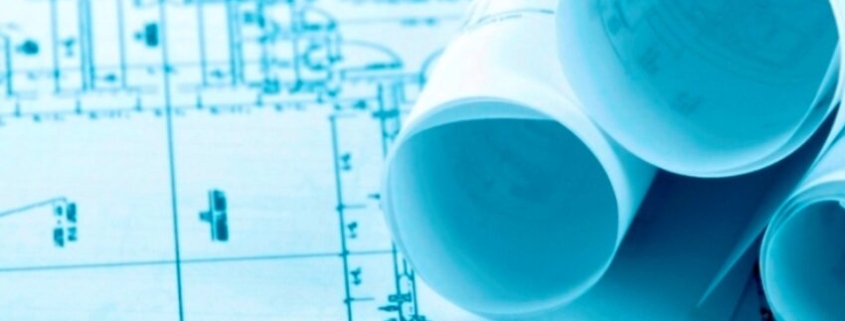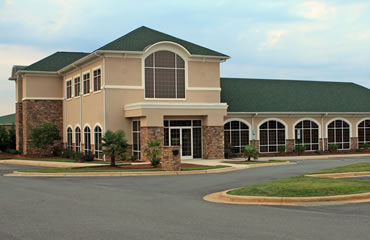The Colorado medical office building market comprises 23.9 million square feet of total space.
Of this amount, approximately 17.6 million sf, or 74%, is located within Colorado’s two largest core-based statistical areas, Denver and Colorado Springs. Inside these metros, the outpatient/MOB market is vibrant, growing and coveted by medical office investors.
The Denver MOB Market
The Denver MOB market contains 14 million sf of space across 275 MOBs that Revista tracks (7,500 sf and greater). Denver’s MOB market has been growing recently as more than 800,000 sf has delivered to the market during the past year. Despite inventory growth of 6% during the past year, the MOB occupancy rate has held steady and even risen in recent quarters. The MOB occupancy rate in Denver stands at 90.5% as of the second quarter of 2020 (Figure 1). This is up 20 basis points from first-quarter 2020 and up 10 bps from the second quarter of 2019. Overall, Denver’s MOB occupancy rate has performed quite admirably during the beginning stages of the COVID-19 pandemic.

The average triple-net MOB rent in Denver was $21.47 per sf in second-quarter 2020. Same-store rent growth was 3.5%, year over year. Denver’s same-store rent growth metric ranks 15th of the 125 CBSAs Revista tracks and compares to just 1.5% same store year-over-year rent growth for the aggregate top 50 CBSAs.
Overall, from both a supply/ demand perspective and a revenue or rent perspective, the Denver MOB market is strong and growing which makes it attractive for investors.
One form of investment in the market is through new construction. Denver currently has 574,000 sf of MOB construction in progress, which represents 4% construction vs. inventory. Fidelis Healthcare is developing a 100,000-sf MOB near the campus of SCL St. Joseph Hospital. The MOB is scheduled to be complete later this year. Synergy Medical Partners also is constructing a 100,000-sf MOB on the campus of Swedish Medical Center. The MOB also is scheduled to be complete this year and contains first floor retail.
Mortenson Development and Seavest Healthcare Properties are planning to build a 43,732-sf MOB in the fast-growing Candelas master planned community in Arvada. Mortensen and Seavest have been longtime investors in Colorado health care real estate.
The Colorado Springs MOB Market
The Colorado Springs MOB market contains 3.6 million sf of space, which makes it the 73rd largest MOB market Revista tracks. The Colorado Springs MOB market has not seen as much recent growth as Denver and just 72,000 sf has delivered in the past year. The Springs MOB occupancy has performed quite well recently and stands at 90% as of the second quarter. In fact, the lack of recent inventory growth has allowed the occupancy to climb from a low of 86.8% in the fourth quarter of 2018 to 90% in second quarter 2020 (Figure 2).

The average triple-net rent in Colorado Springs was $15.72 in the second quarter. Base rents for MOBs in the Springs range from $11.80 (10th percentile) to $24.01 (90th percentile), according to Revista’s metro report on Colorado Springs. Same-store year-over-year rent growth in the Springs was 2.7% in the second quarter, also above the 1.5% registered by the Top 50 CBSA benchmark.
Strong fundamentals are attracting new MOB development in the Springs. There is 360,000 sf of MOB space in progress across six projects in the Springs area. UCHealth has two projects under construction. It is building a 65,000-sf MOB next to Grandview Hospital. Scheduled to complete later this year, UCHealth will lease the project from MBRE Healthcare Real Estate. In addition, UCHealth is scheduled to break ground on the 120,000-sf Eastview Medical Center. This project is located on the east side of town and will contain an ambulatory surgery center, outpatient imaging, medical and surgical specialty services, an orthopedic center and outpatient rehabilitation, according to UCHealth.
The Colorado Medical Office Building Transaction Market
Attractive real estate fundamentals also can lead to a robust transaction market. Both Denver and Colorado Springs have seen strong MOB transaction activity recently.
In Denver, over $139 million worth of MOBs have traded hands during the past year. The current average price per square foot is $270 and the average trailing 12-month cap rate is 6.5% as of the second quarter (Figure 3). Notable recent trades in the Denver market include the sale-leaseback of the Southeast Pediatric Medical Center in Centennial to the Thompson Realty Group of Lincoln, Nebraska.

Healthcare Realty Trust paid $33 million in March for the Ridgeline Campus, located in Highlands Ranch. The Ridgeline Campus is a 137,000-sf MOB to which Children’s Hospital Colorado Pediatric Mental Health Institute recently moved.
In Colorado Springs, over $85 million worth of MOBs has traded during the past year. The average price per sf is $277 and the average TTM cap rate was 6.2 in second-quarter 2020 (Figure 3). A notable recent trade includes MBRE Healthcare’s $33.6 million purchase of the three-building, 149,428-sf Union Park Medical Campus. This was a high-profile trade that closed during the middle of the pandemic.
Overall, Denver and Colorado Springs are good examples of the attractiveness of the outpatient/MOB sector and its merits to investors and other stakeholders.
Source: Colorado Real Estate Journal






